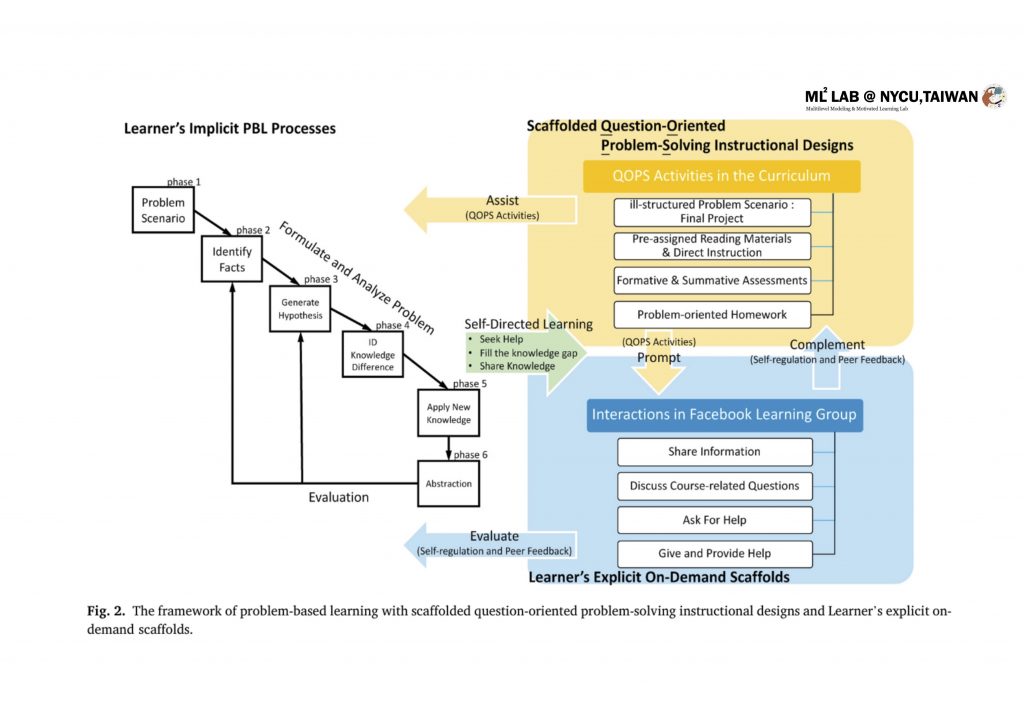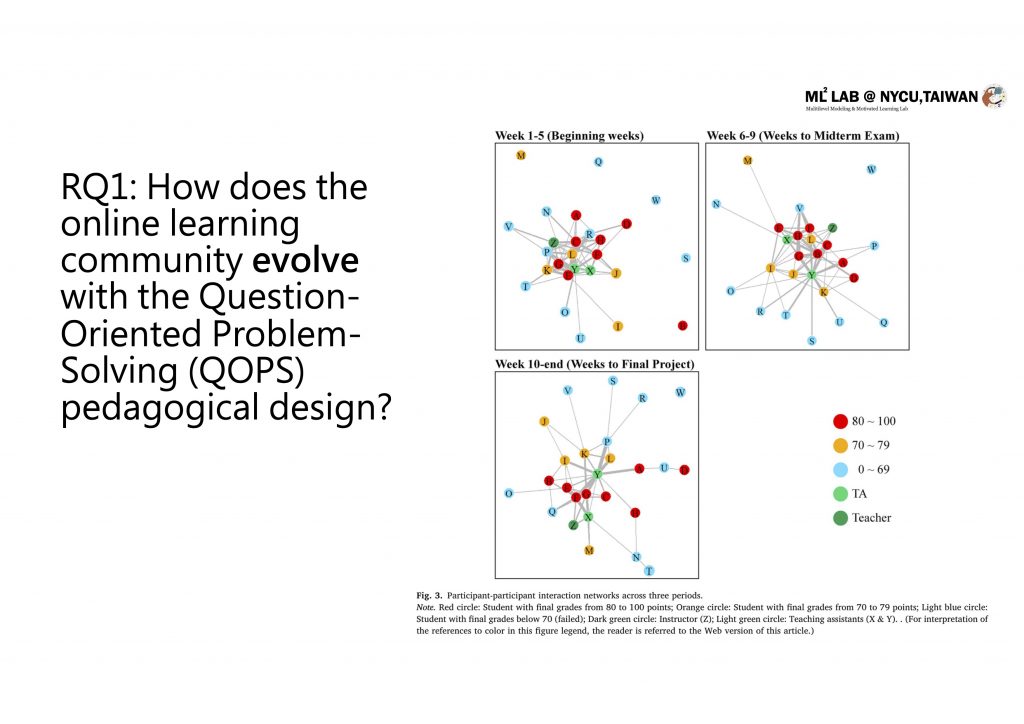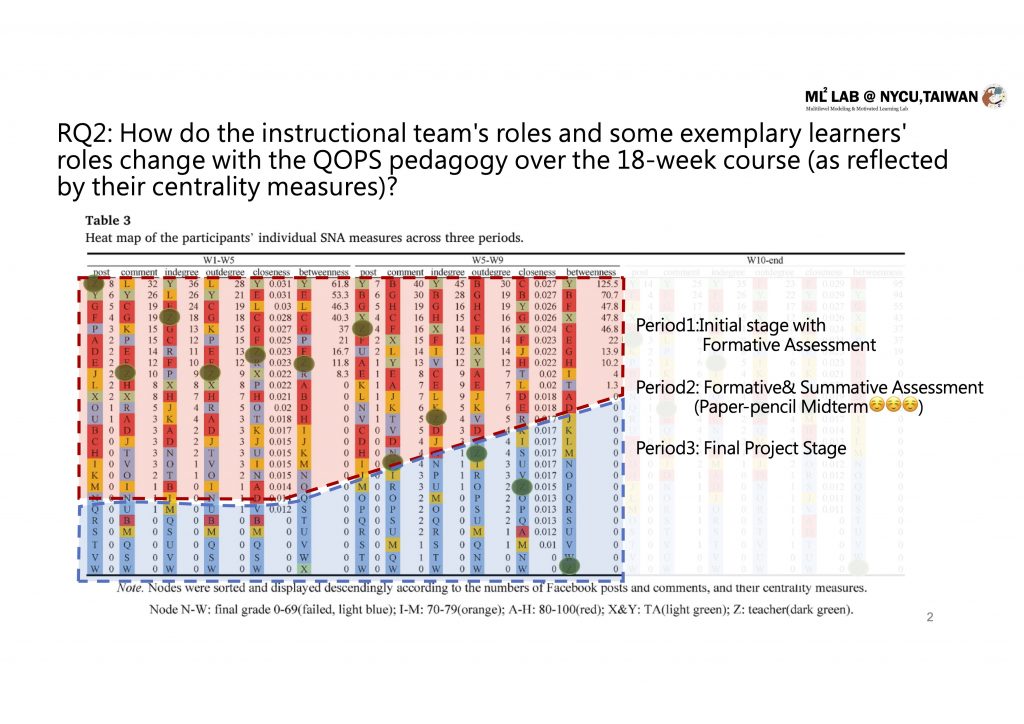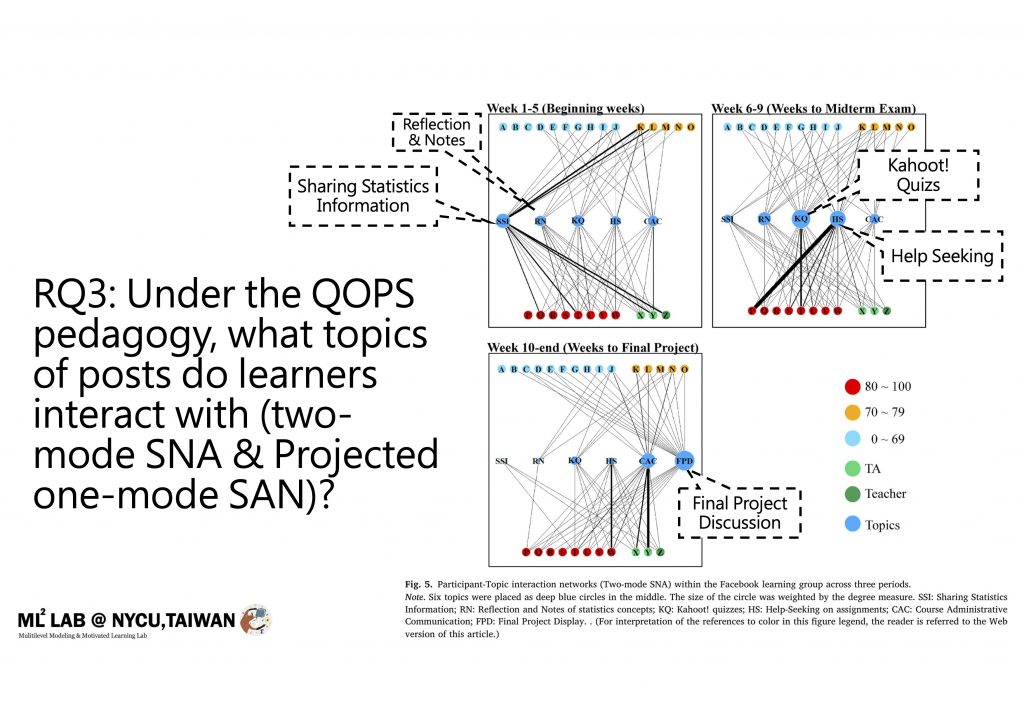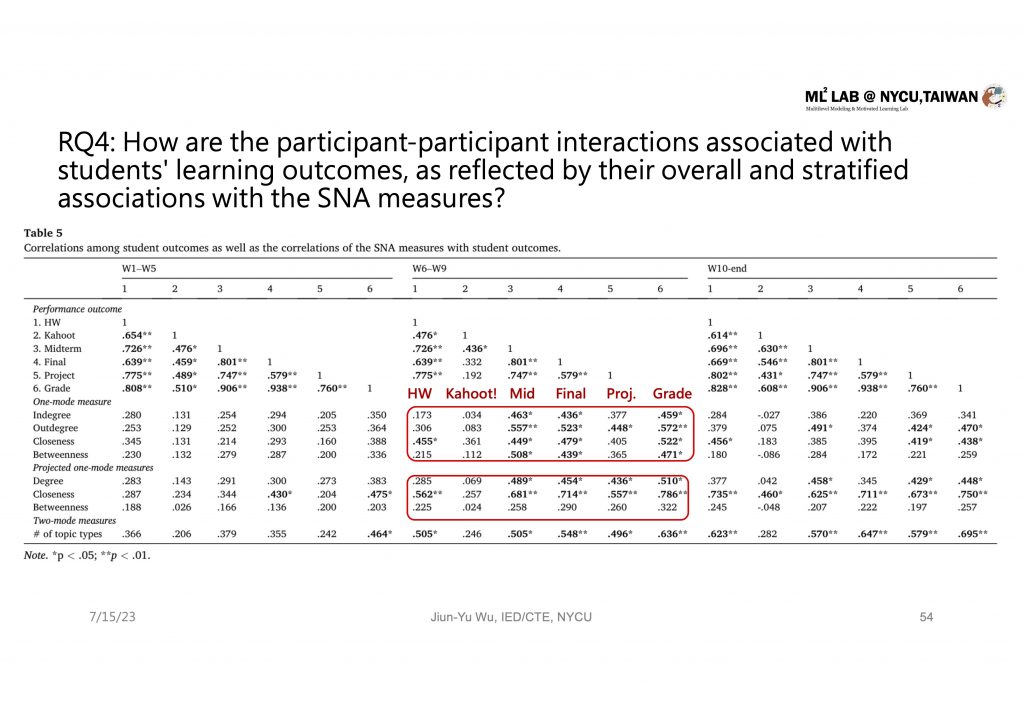Wu, J.-Y.*, & Nain, M.-W.† (2021). The dynamics of an online learning community in a hybrid statistics classroom over time: Implications for the question-oriented problem-solving course design with the social network analysis approach. Computers & Education, 166, 104120. (SSCI: 2021 IF: 11.182, Q1)
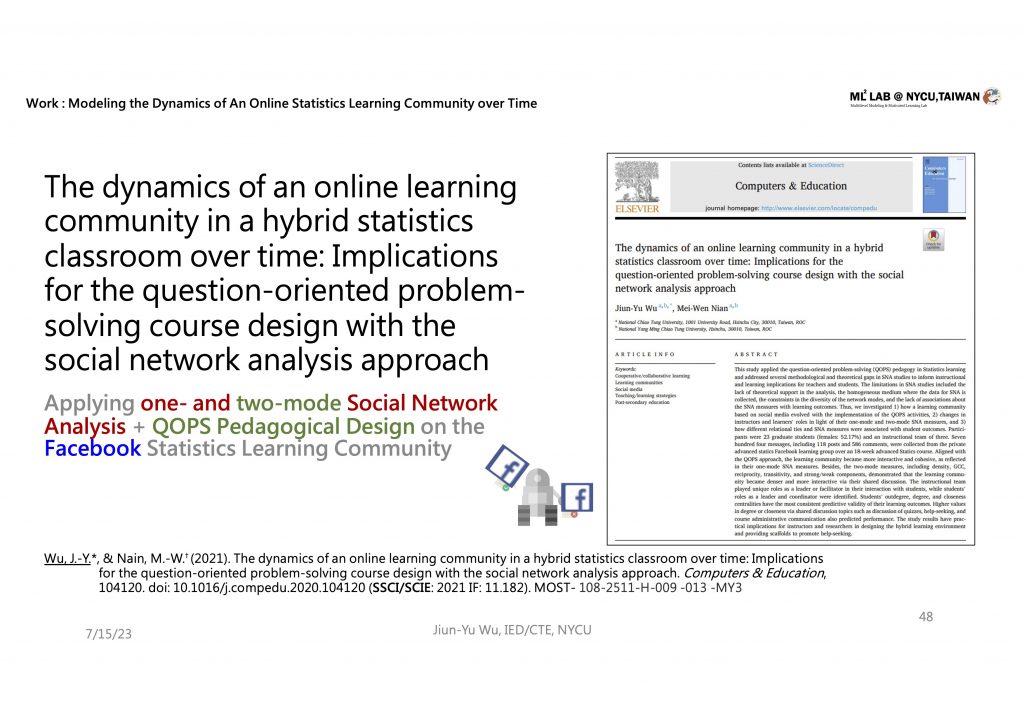
Abstract
This study applied the question-oriented problem-solving (QOPS) pedagogy in Statistics learning and addressed several methodological and theoretical gaps in SNA studies to inform instructional and learning implications for teachers and students. The limitations in SNA studies included the lack of theoretical support in the analysis, the homogeneous medium where the data for SNA is collected, the constraints in the diversity of the network modes, and the lack of associations about the SNA measures with learning outcomes. Thus, we investigated 1) how a learning community based on social media evolved with the implementation of the QOPS activities, 2) changes in instructors’ and learners’ roles in light of their one-mode and two-mode SNA measures, and 3) how different relational ties and SNA measures were associated with student outcomes. Participants were 23 graduate students (females: 52.17%) and an instructional team of three. Seven hundred four messages, including 118 posts and 586 comments, were collected from the private advanced statics Facebook learning group over an 18-week advanced Statics course. Aligned with the QOPS approach, the learning community became more interactive and cohesive, as reflected in their one-mode SNA measures. Besides, the two-mode measures, including density, GCC, reciprocity, transitivity, and strong/weak components, demonstrated that the learning community became denser and more interactive via their shared discussion. The instructional team played unique roles as a leader or facilitators in their interaction with students, while students’ roles as a leader and coordinators were identified. Students’ outdegree, degree, and closeness centralities have the most consistent predictive validity of their learning outcomes. Higher values in degree or closeness via shared discussion topics such as discussion of quizzes, help-seeking, and course administrative communication also predicted performance. The study results have practical implications for instructors and researchers in designing the hybrid learning environment and providing scaffolds to promote help-seeking.
Keywords: Cooperative/collaborative learning, Learning communities, Social media, Teaching/learning strategies, Post-secondary education, Learning Analytics, Social Network Analysis, Longitudinal dessign
摘要
本研究創新提出一個「問題導向解決策略(Question-Oriented Problem-Solving, QOPS)」教學設計,並應用於實際統計課堂教學之中;為了檢驗一整個學期的教學與學習成效,以及學生學習社群在課堂中的長期互動樣態和其與學習成效之間關聯,我們突破性提出「時序性雙模社會網路分析框架」(Analytical framework of longitudinal two-mode Social Network Analysis),以解決現今SNA研究中的方法論和教學與學習理論的缺口,為當代教師和學生的教學和學習提供以證據為本的建議。現今SNA研究的限制包括分析中缺乏理論支持,數據收集的來源過於單一,網路模式的多樣性檢驗受到限制,以及缺乏SNA指標與學習成效之間的關聯文獻。因此,我們研究了1)在實施QOPS教學後,社交媒體中的學習社群如何隨時發展,2)在單模與雙模SNA網路檢驗之下,教師、助教和學生角色的長期變化,以及3)不同時間點中,SNA關聯指標與學生成效相關呈現何種關聯。參與者包括23名研究生(女性:52.17%)和一個由三人組成的教學團隊。從為期18週的高等統計混成式課程,我們由其中的線上Facebook學習社群中收集了704條消息,包括118篇貼文和586條回文。研究結果顯示,與QOPS教學設計的目標一致,學習社群在單模SNA分析中顯得更具互動性和凝聚力。此外,包括密度、全局群聚係數(GCC)、互動性、移轉性和強/弱元件在內的雙模分析指標皆表明,學習社區通過共享討論而變得更為密集互動。隨著學期的推進,教學團隊在與學生的互動中逐漸由領導者轉為促進者的獨特角色,而學生的領導者和協調者角色也於學期中後段後被分析實證所確認。學生的出度(out-degree)、度中心性(degree centrality)和接近中心性指標(closeness centrality)對其學習成果具有長期且一致的正向預測效果。學生若能更多參與共享主題討論(如研討作業,尋求幫助,和溝通課程事務等等)將具有更高的度中心性或接近度中心性,同時也呈現了更好的學習成效。本研究為當代教師和研究人員在設計混成式課堂時提供明確教學設計規範,利用此教學設計來有效的促進學習社群的凝聚與互動,具達成優質教育目標價值。
關鍵詞:合作/協同學習,學習社群,社交媒體,教學/學習策略,高等教育,學習分析,社會網路分析,長期設計
